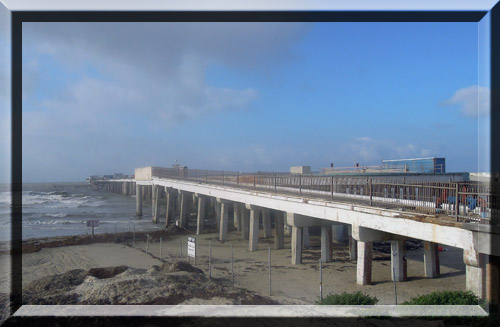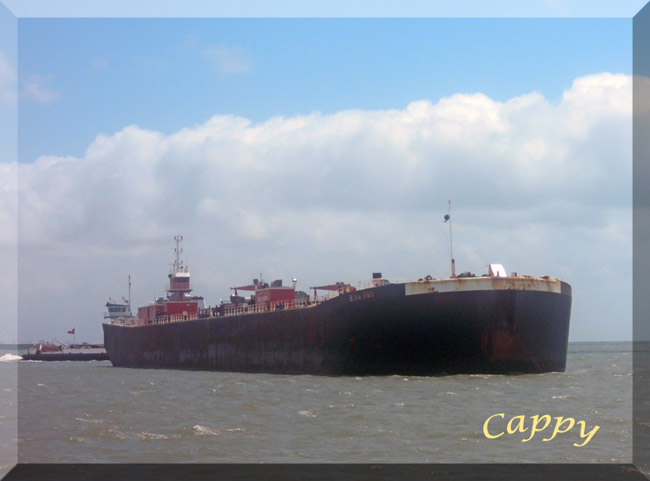"Deep in the south of Texas
Not so long ago,
There on a crowded island
In the gulf of Mexico"
Dusty Hill; Billy Gibbons; Frank Lee Beard
ZZ Top
Galveston Island -
For those native and naturalized Texans that grew up near the ocean, it is a treat to see the vast Gulf of Mexico, breathe in the saltwater air and feel the ocean breeze - Invigorating. For those that have never had the opportunity to see an ocean, or test themselves in the surf, Galveston Island is the perfect place to get your feet wet - and the rest of you as well.
It is my good fortune to have friends on the island that allow me to impose upon them from time to time. It is a three-fold pleasure in that they provide a relaxing environment made for shooting the bull, there are many restaurants that serve outstanding meals and I raise my vitamin D levels at the beach soaking up the sun. Number four might be the therapeutic benefit for the eyes as they gaze upon a bevy of attractive tourists; but I suppose I need not mention that here.
It has not always been fun in the sun. Galveston has been pummeled by more than one devastating hurricane. It is a testament to the determination of the human spirit to see the manner in which the citizens bounce back after each calamity. More on this in a minute -

So let's say you are a Spaniard by name of Cabeza de Vaca. You start out from Spain with 600 men on an adventure to the New World. You pull into Tampa Bay and proceed to lose control of your men as the gold fever ravishes your crew. Left with some 200 men you head around the tip of Florida and enter the Gulf of Mexico. As intrepid seamen, you are in unfamiliar waters; the Gulf has not been named yet. You are besieged by a storm that leaves you shipwrecked on a sandbar in the middle of nowhere. Now that you are down to about 40 crewmembers you meet the Akokisa and/or Karankawa Indians who immediately make you and your men slaves. With great effort, you and the last four survivors escape, having no idea that the sandbar you escaped from would later be called Galveston Island. What would you do now? You become a medicine man and lead a devout following of locals all over what later became Texas and then into Mexico, landing in Mexico City. Gaining your bearings, you strike a deal so you can get back to Spain. Now it is time to write a book; that's what you'd do.
Things stayed pretty much as they were until a Frenchman, Robert Cavelier La Salle came along and claimed the area for King Louis and named it St. Louis.
We all know St. Louis is much further north. Jose de Evia must have known as well, he sailed in and set things straight. Jose was charting the area for the Spanish Governor, Bernardo de Galvez in 1786. Jose named the protected bay Galveston, after his governor. Later the island and the city took on the same name. Now things were set right. Unfortunately, Bernardo de Galvez died the same year so he never set foot on his namesake.
Many claim that the very first European settler was none other than the cultured, debonair and very notorious privateer, Jean Lafitte. Some thought of him as a pirate. I am not here to debate the issue. He established the colony of Campeche on Galveston Island in 1817. He, and about 1,000 like-minded profiteers, made this a pirate's, I mean privateer's, stronghold. Due to his shenanigans on the high seas, the U.S. sent a warship to the harbor and threatened to use his village for target practice. Lafitte decided to move, after he threw a big party and burned his town down. Jean went on to confuse a lot of people as to the pirate/privateer thing.
Page 2
|
A Canadian, Michel B. Menard, was the founder of modern day Galveston. Menard began speculating in Texas land in Nacogdoches in 1930. The Mexicans were not handing out land grants to anyone not born in Texas. Not to be thwarted, Menard went into a partnership with Juan Seguin, a Mexican citizen. Juan put his name on the grants but it was Michel's money and brains behind the deal. In 1836 Juan purchased 4,600 acres at the eastern end of Galveston Island. In 1838 Michel formed the Galveston City Company along with other prominent Texas businessmen.
Michel B. Menards home can be seen today as a museum. A lot of research has gone into restoring the home in an authentic style and is worth a walk through. A little side note about Senor Seguin: Juan later went on to fight under Sam Houston at the battle of San Jacinto. Galveston boasts, as does Nagcogdoches, of many first in our great state. Galveston was incorporated in 1839. Since Texas did not become a state until 1845 you can see there will be a lot of tobacco spat and a lot of grass needs mowin' before anyone can come to a satisfyin' answer for everyone. Without having to bite off a chaw and gettin' into fisticuffs, I'll just relay the claims as they come. Galveston became the most active port west of New Orleans and the largest city in the state. They announced the first post office; first opera house, first hospital, first golf course, first country club; the list goes on and on. 
Colorful Kites Uncontested fact - One fact is beyond dispute and that is that Galveston was the site of the most deadly natural disaster in United States history. It was so deadly that over one hundred years later it is still known as the Great Storm. |
One piece of trivia that many may not realize is that hurricanes are not named. Tropical storms are named and they retain their name if they develop into hurricanes. Having said that, there was no official naming of tropical storms until George in 1947. If anyone called a storm by name it was usually referred to as a point in time, such as the Labor Day Hurricane of 1935. Since the cataclysmic event in Galveston hit in 1900, it is most often referred to as the Galveston Hurricane of 1900.
The devastation began on September 8, 1900. It is estimated that between 10,000 and 12,000 people died from the storm, at least 6,000 on the island itself. The property damage was in excess of $30 million. In todays dollars that is about three quarters of a billion. "Sunday morning, the day after the disaster, began with the sound of bells from the ruined Ursuline Convent calling people to worship," wrote historian David G. McComb in "Galveston: A History." An emergency city council meeting took place on September 9th. The Galveston Daily News refused to leave the island and published Sept. 9th and 10th's issue together. It was printed on one sheet of paper. One side listed the dead and the other side covered the general havoc the storm created. In the first week after the storm, telegraph and water services were restored. Telephone lines were laid for the new telephone system. By the third week, Houston relief groups went home. The trolleys began operation and freight began moving through the harbor. Oh yes, and the saloons were reopened. The city went on to organize the construction of a seawall, the lifting of private residence and raising the islands elevation, that's right, the whole island. A good time to visit Galveston Island is during the Lone Star Rally. There is no charge for admittance. The rally dates are November 3-6 this year. If you are interested in learning more: Lone Star Rally. I heard that Jax from the Sons of Malarkey is going to be there. Everyone says they have a great time at the rally. Well Buckaroos - it is that time again. Time to say, see you next month. I do have a short Galveston Video. Go to THIS LINK to see the video.  |
|
Bonus PIX
|

1900 Hurricane Monument

Shipping Channel
